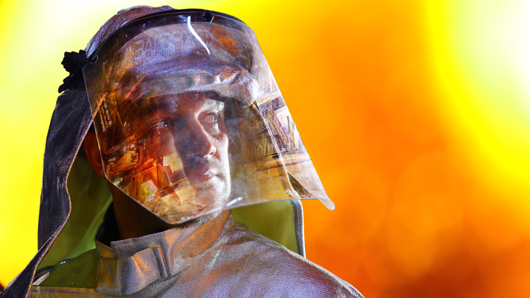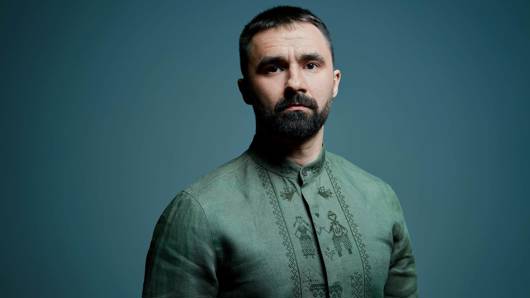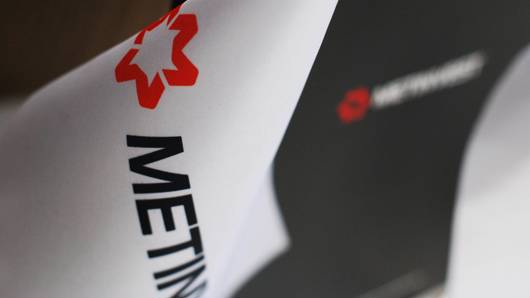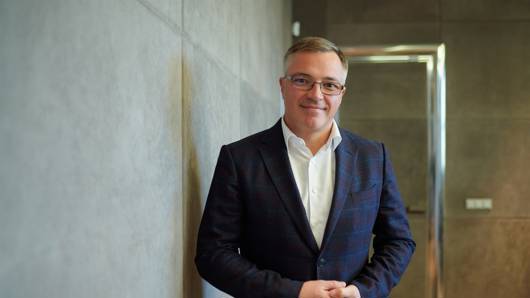In an interview with Pryamiy TV Channel, Oleksandr Myronenko, chief operating officer of Metinvest Group, elaborated on the specifics of producing and outfitting steel command posts, as well as the scale of production and plans for manufacturing new defence products for Ukraine.
– The steel command bunkers are effectively “hideouts” 2.0. As part of Rinat Akhmetov’s Steel Front initiative, Metinvest has developed a new design specifically for command staff. What prompted the Group to start building such command bunkers?
– Metinvest has joined a fortification programme that is being implemented across almost the entire front line. The second and third lines are being actively constructed. To date, our specialists have built more than 35 platoon strongpoints. We plan to build around 90 more.
Our shelters are routinely used in these posts and we have already supplied more than 330 units to our army. It became apparent that we also needed to make command posts to ensure uninterrupted military command near the contact line. Following this, we had a very meaningful discussion with the military, including command in specific areas. We have developed a command post project consisting of 5-6 “hideouts”. It takes into account the conditions in which these posts are used because personnel are stationed there 24/7 throughout the year. The posts must meet certain requirements to ensure that the command staff can stay near the positions comfortably and maintain continuous military control.
– How were these posts designed in general? What were the main requirements or needs of the command taken into consideration?
– Primarily, the posts must ensure uninterrupted communication. For this reason, they are equipped with internet and telephone connections, as well as all other communication means used by our military. In addition, there are designated areas where operators can monitor online what is happening on the contact line. Some monitor video feeds from reconnaissance drones patrolling the front line. Others observe changes in enemy and our positions, as well as current combat activity on the contact line. All this is done using large TVs and computer equipment, which we also supply.
Naturally, if a person is stationed there for 12 hours or more, they need to work in comfortable conditions. The posts include several control rooms for direct military management. There are also rooms for meetings, dining and rest. Of course, there are also showers, toilets and so on to meet the immediate needs of military personnel. This is all situated deep underground for the safety of military personnel.
– You mentioned that there is electricity, internet and telephone. How difficult was it to install all these communications? And regarding heating: how is this issue addressed?
– These posts have electricity and fixed heating installations. There are conventional electric heaters that maintain a fairly comfortable temperature. The posts are also equipped with a modern ventilation system to prevent air stagnation.
As for communication, we cooperated with the military. They laid the networks and our specialists installed the wiring depending on what was to be placed in each room. For example, in some cases, there are simply sockets, while in others, there is a communications centre that provides both connection and video communication, along with everything else needed for 21st century warfare.
– How are these bunkers installed on the front line?
– Mostly during the night, because there are 5-6 quite substantial “hideouts” with a diameter of almost 2.5 metres and a length of 6 metres. They must be transported to the location covertly and the site itself prepared. That involves excavating a pit, placing them there, constructing communication trenches, burying and covering them with several layers of wood. All this requires significant security measures, which we implement together with the military. They prepare the infrastructure, while we deliver and install the “hideouts” and help with their setup.
– How long does it take to install such a bunker?
– Talking about production, it takes 4-5 weeks to prepare 5-6 “hideouts”. This includes steel fabrication, assembly of the structure and internal fitting so that the completed construction can be loaded onto a truck, transported, unloaded and buried. We notify the military when everything is ready and they prepare the infrastructure for the command post location by that date.
We maintain constant communication with the military. Before installing these “hideouts”, they come over and we inspect everything for functionality, and then we deliver and install them at the sites.
– Are these bunkers primarily designed to protect against artillery shelling?
– The main purpose of these posts is to ensure uninterrupted military command in safe conditions. If they are properly installed, buried underground at a depth of 3-4 metres and covered with multiple layers of wood, they provide protection from artillery strikes of up to 152 millimetres.
We understand that the posts are positioned relatively close to the front line. The enemy’s long-range artillery could reach them, so all security measures must be taken to avoid losing command of the military. The absence of coordination and control could lead to unpredictable actions on the front line. That is why these posts are essential now and we continue their production. We are currently assembling about five more posts. We will distribute them according to the directions and brigades on the front line.
– Have you already received feedback from the military? What is it like?
– We have installed the first post. Overall, we have received positive feedback from the command that received this command post. The conditions are quite comfortable, offering places for rest, work and daily life. However, we have also received some criticism, indicating the need for some redesigns. This feedback is invaluable to us because it helps to refine our products, making them better and more suited for our military’s needs.
The criticism was about minor domestic issues: the beds are uncomfortable and, in some places, the distance between the ventilation and the bed needs adjusting to prevent direct airflow to the head. Addressing these issues will enhance comfort.
– You mentioned that another 5-6 command posts are in production. What are your future plans?
– We have received these requests to produce command posts from the brigades. I think that once everyone sees how they function and how comfortable they are, we will receive more requests. We are already discussing the next stages of production, which includes up to 30 command posts that need to be installed in one of the areas.
– Are many people involved in the production of bunkers? Is their production confidential both in terms of location and the people involved?
– We take the security of this production very seriously. We understand that the enemy is constantly searching for locations where Ukraine’s defence products are made and then targets these sites. Therefore, all our production sites, including for mine trawls, command posts and “hideouts”, are located outside our main facilities. We prioritise the safety of people working at these sites. In total, around 400-500 Metinvest employees are regularly involved in making defence products.
– Speaking of the production scale in general, are there opportunities to expand it?
– There are opportunities for expansion across almost all the products we make, although we are currently limited by the number of people we can engage in this production. In addition to defence, we also have standard production of pig iron, steel, ore and iron ore concentrate, which also requires people. These 400 employees have been reassigned from our main production to defence production.
We need to hire more people. Currently, this is quite problematic because there are certain issues related to employees’ draft deferral, as we recruit people through the military enlistment office. This means that a person must be officially registered with the military enlistment office. When people hear this, they often prefer to seek other opportunities.
That is why we are now trying to work closely with the Ministry of Economy and the Ministry of Defence. While we are capable of increasing production volumes, we need to provide the necessary conditions for this. We have the space and equipment; we need people. And people need a draft deferral to work on military orders.
– The steel “hideouts” are just one of the projects within Rinat Akhmetov’s Steel Front. What other essential products are you manufacturing or planning to produce for the military?
– Currently, our main focus is on demining territories and providing shelters and fortifications. I have already spoken about fortifications: we are engaged in constructing defensive lines. Our people work there and we provide the equipment. We also use contractors’ equipment and direct it to the defence lines assigned to us. There, people are working under the supervision of the military: digging trenches and establishing platoon strongpoints, among other necessary activities.
The demining aspect involves mine trawls. We are mass-producing KMT-7 trawls and have already delivered more than 10 units to the army. We manufacture and donate five trawls to the army every month.
Another area is the modification of shelters. We have already made command posts. Now, we are discussing the production of “hideouts” for drone operators. This is a smaller version of the “hideout”. According to the design, it will be 3 metres long and 2.5 metres high, lighter than the ones we are currently producing. It will be easy to assemble and disassemble. The “hideout” will also be installed underground so that soldiers can quickly dig in, create a safe shelter and work from there.
We are also developing another area related to medical stabilisation points. I think that in about a month we will be able to show in more detail what they are and how our medics will be able to use them. We are developing the medical points now and I think we will have the first one ready soon.










